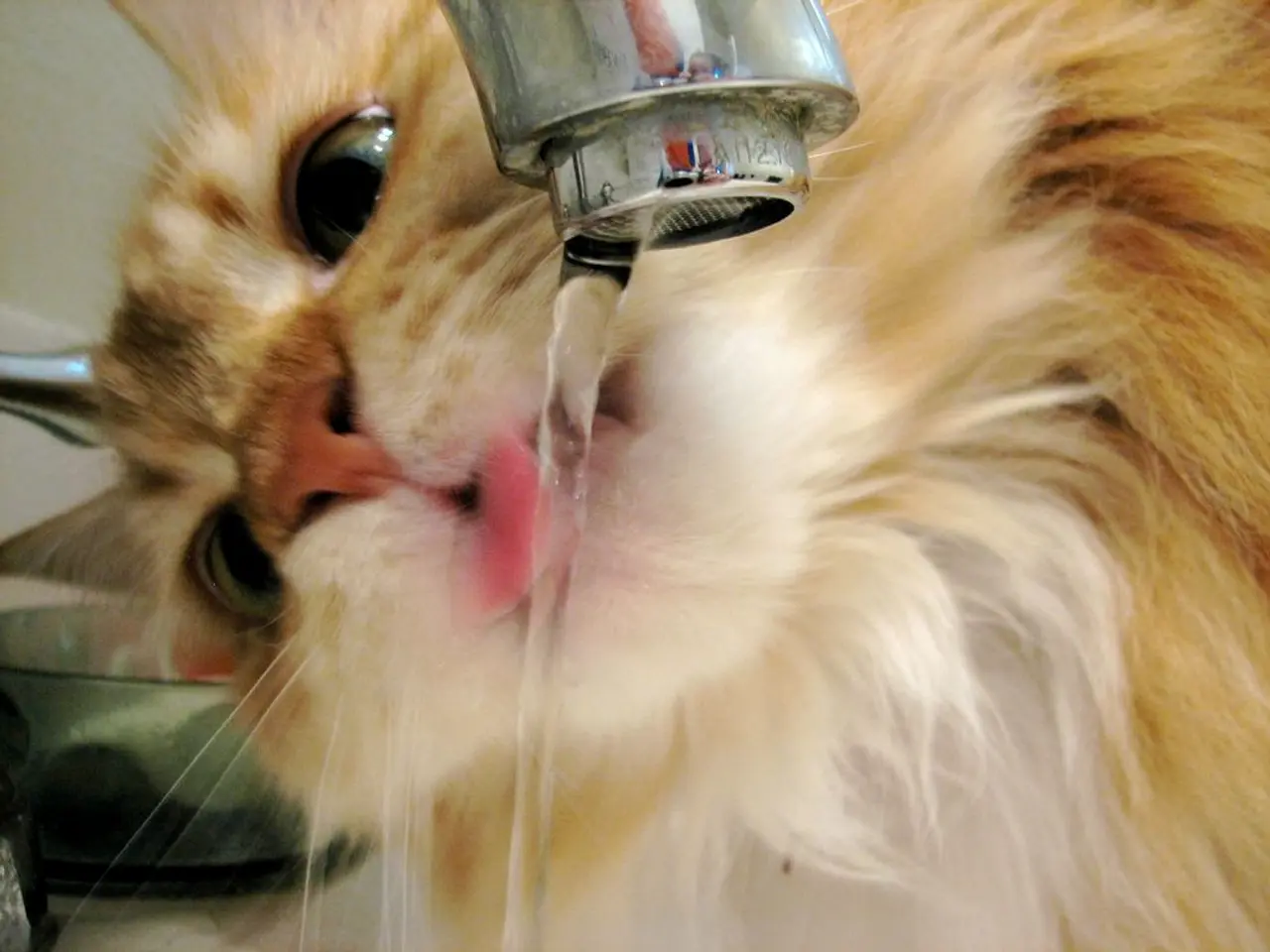Thirst and Diabetes: Association, Remedies, and Additional Signs
In the world of health, excessive thirst can be a concerning symptom, especially when accompanied by frequent urination. This article aims to shed light on the connection between thirst and three common conditions: diabetes mellitus (Type 1 and Type 2), gestational diabetes, and diabetes insipidus.
Diabetes Mellitus, whether Type 1 or Type 2, is a condition characterised by high blood sugar levels. This results in the kidneys producing more urine to flush out excess glucose, leading to dehydration and increased thirst. Type 1 diabetes typically presents with abrupt onset of excessive urination and extreme thirst, while Type 2 diabetes develops more gradually, alongside other symptoms like fatigue and frequent urination.
Gestational Diabetes Mellitus, a form of diabetes that occurs during pregnancy, shares similar symptoms with other types of diabetes mellitus, including hyperglycemia-induced thirst and increased urination.
On the other hand, Diabetes Insipidus is a condition unrelated to blood sugar levels. It is caused by disruptions in the hormone vasopressin's function, leading to excessive thirst and large volumes of very diluted urine. There are four main types: Central Diabetes Insipidus, Nephrogenic Diabetes Insipidus, Dipsogenic Diabetes Insipidus, and Gestational Diabetes Insipidus. All cause intense thirst due to fluid loss and dehydration, but the mechanism is unrelated to blood glucose.
To manage diabetes and prevent complications, it's crucial to regularly check blood glucose levels, monitor blood pressure and cholesterol levels, quit smoking, follow a diabetes meal plan, increase physical activity, and have an A1C test. For someone with diabetes insipidus, the primary treatment is drinking enough liquid to prevent dehydration.
It's essential to note that maintaining a healthful diet and lifestyle can help prevent some forms of diabetes. Anyone experiencing unusually strong thirst, still feeling thirsty after drinking, dry mouth, and frequent urination should see a doctor for a proper diagnosis. Diagnosis of diabetes involves blood tests and testing for gestational diabetes is done between specific gestational periods.
In the United States, males typically consume 3.46 liters of water per day, while females consume 2.74 liters. However, there are no specific guidelines for daily water intake, and individual needs may vary.
In conclusion, excessive thirst is a common symptom of diabetes mellitus (Type 1, Type 2, and gestational) due to hyperglycemia leading to osmotic diuresis, while diabetes insipidus (including gestational form) causes thirst due to problems in kidney water regulation unrelated to blood sugar levels. Always consult with a healthcare professional for accurate information and guidance.
- Persons with Type 1 or Type 2 diabetes mellitus may experience symptoms of increased thirst and frequent urination, which stem from high blood sugar levels causing osmotic diuresis.
- Gestational diabetes mellitus, a condition prevalent during pregnancy, presents similar symptoms to other forms of diabetes mellitus, such as hyperglycemia-induced thirst and increased urination.
- Conversely, diabetes insipidus, not tied to blood sugar levels, is characterized by excessive thirst and voluminous, diluted urine caused by issues with the hormone vasopressin's function.
- In health and wellness, maintaining a balanced diet and an active lifestyle can aid in the prevention and management of various medical conditions, including chronic diseases like Type-2 diabetes.
- Therapies and treatments for diabetes and diabetes insipidus are different, with Type-2 diabetes requiring strict blood glucose monitoring, regular testing, and a diabetes meal plan along with increased physical activity, while diabetes insipidus treatment primarily focuses on preventing dehydration through sufficient liquid intake.
- Seekers of proper medical care are advised to consult healthcare professionals if they experience persistent thirst, dehydration, dry mouth, or frequent urination as these symptoms could indicate diabetes mellitus or other related medical-conditions.
- Nutritional guidance is essential for both diabetes management and diabetes prevention, emphasizing dietary choices that help maintain blood glucose levels.
- Fitness and exercise play a crucial role in managing diabetes, improving overall health and wellbeing, and reducing the risk of diabetes complications.
- Mental health is a vital aspect of diabetes care, as stress management is instrumental in avoiding spikes in blood sugar levels and maintaining healthy coping mechanisms.
- Although there are no set daily water intake guidelines, science suggests that individual needs may differ, with people potentially consuming varying amounts of water based on factors like gender, physical activity, and environmental conditions.




